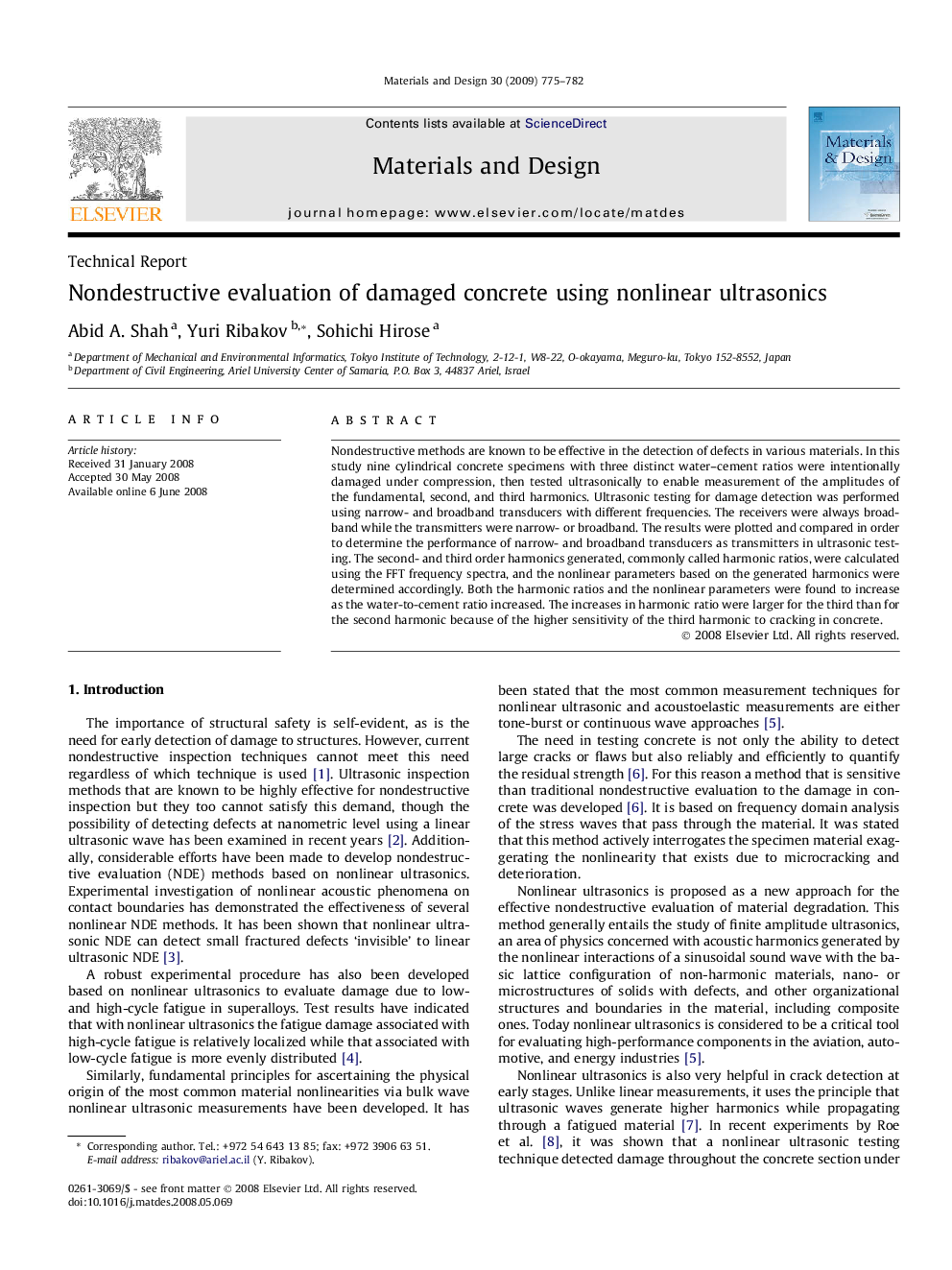| Article ID | Journal | Published Year | Pages | File Type |
|---|---|---|---|---|
| 832971 | Materials & Design (1980-2015) | 2009 | 8 Pages |
Nondestructive methods are known to be effective in the detection of defects in various materials. In this study nine cylindrical concrete specimens with three distinct water–cement ratios were intentionally damaged under compression, then tested ultrasonically to enable measurement of the amplitudes of the fundamental, second, and third harmonics. Ultrasonic testing for damage detection was performed using narrow- and broadband transducers with different frequencies. The receivers were always broadband while the transmitters were narrow- or broadband. The results were plotted and compared in order to determine the performance of narrow- and broadband transducers as transmitters in ultrasonic testing. The second- and third order harmonics generated, commonly called harmonic ratios, were calculated using the FFT frequency spectra, and the nonlinear parameters based on the generated harmonics were determined accordingly. Both the harmonic ratios and the nonlinear parameters were found to increase as the water-to-cement ratio increased. The increases in harmonic ratio were larger for the third than for the second harmonic because of the higher sensitivity of the third harmonic to cracking in concrete.
